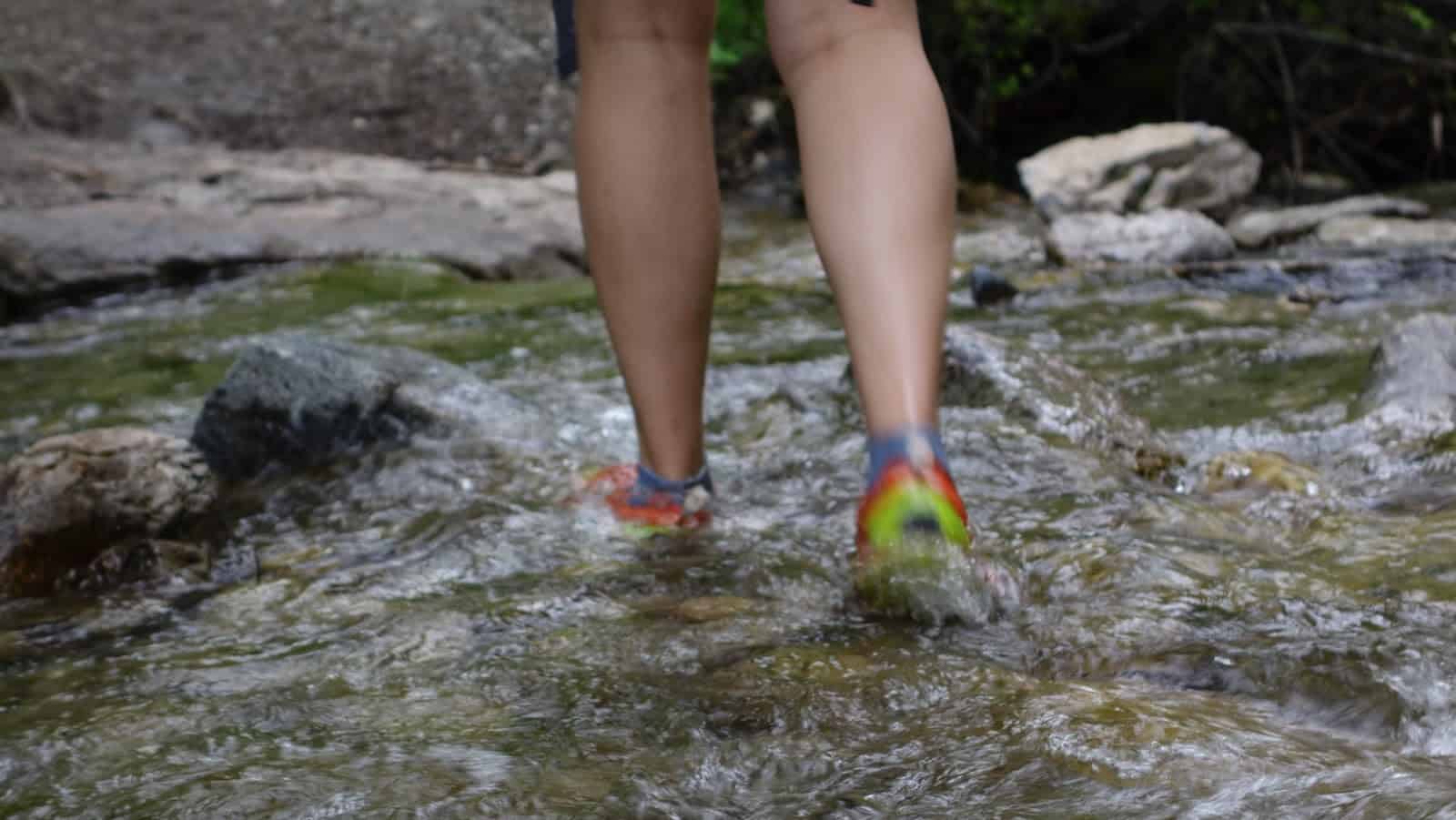This post is part of a new blog-style series that summarizes key concepts about backpacking skills, gear, and philosophy in a shorter format than our standard articles. It’s filed under the category blog.
![]()
Crossing rivers “ultralight style” – that’s when you simply walk through the water wearing your hiking shoes and keep walking on the trail once you get to the other side.
There’s no stopping to change shoes and socks, and no carrying an extra pair of “water shoes”.

There are two primary barriers that trip up hikers when it comes to crossing a stream in your hiking shoes.
The first is the trauma (sic) caused by (the idea of) wet feet and the second is the fear of blisters caused by added moisture to the footwear.
The trauma caused by the idea of wet feet usually goes away with experience. Other than this perceived trauma (which of course, is not real trauma, but merely some level of minor discomfort), having damp shoes has no real impact on most hiker’s performance.
The added moisture to your footwear that you think might cause blisters may actually be offset by the fact that the water is cold. Blisters are formed by heat, friction, and moisture. Heat and friction are generally more problematic than moisture. Friction can be solved almost entirely if you carry a light pack and wear a lightweight, flexible trail running shoe instead of a hiking boot.
The ideal footwear for hiking in wet areas where there are lots of stream crossings has the following characteristics:
- lightweight – so they absorb less water
- flexible – so when you start walking on the other side of the stream, each step “plunges” water out of the shoe
- breathable mesh uppers – so water drains out of them readily
So embrace those stream crossings – they provide opportunities to cool your feet down and experience some podiatric refreshment!



Home › Forums › Crossing Rivers and Water Shoes